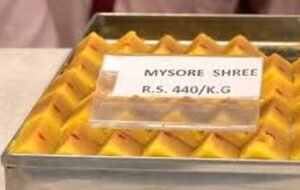
Cultivating a Global Farm
India’s Agricultural Trade Landscape and Strategic Policy Outlook
Introduction: Why is this in News?
The article “Cultivating a Global Farm” published on May 26, 2025, analyzes India’s agricultural export and import performance in the fiscal year 2024–25 (FY25) amidst global trade tensions, the evolution of Free Trade Agreements (FTAs), and domestic challenges. It underlines both opportunities and vulnerabilities for Indian agriculture in a globalizing trade system.
In particular, the article evaluates the impact of high Minimum Export Prices (MEPs), global commodity cycles, and policy gaps, while highlighting how edible oil imports continue to burden India’s trade balance. This issue is relevant to CLAT Current Affairs 2026 because it intersects with economic policy, international trade law, WTO rules, and India’s food security strategy—key themes for law aspirants.
Summary: Key Highlights in Point Format
- India’s Agri-Export Performance (FY25)
- India’s total agricultural exports stood at $52 billion in FY25, a 6.3% rise from the previous year.
- Major exports included:
- Rice – $12.5B (24%)
- Marine products – $7.4B (14.2%)
- Spices – $4.5B (8.6%)
- Buffalo meat – $4.1B (7.8%)
- Processed foods, fruits & vegetables, and cotton also contributed significantly.
- India’s Agricultural Imports (FY25)
- Imports rose 15.6% from $32.8B in FY24 to $38.2B in FY25.
- Major imports included:
- Vegetable oils – $17.3B (45.4%)
- Pulses – $5.5B (14.3%)
- Fruits, cashew, sugar, and natural rubber followed.
- Edible Oil Dependency: A Strategic Concern
- India imported 16.4 million metric tons (MMT) of edible oils in FY25.
- Over 55–60% of edible oil demand is met via imports, primarily palm oil.
- This creates a major drain on forex and is environmentally unsustainable.
- Policy Weaknesses in Edible Oil Sector
- Government initiatives like oilseed missions have had limited success.
- Low import duty and price gaps favor imports over domestic production.
- Mustard yields in India are one-fourth of global leaders like Canada.
- Farmers lack price incentives and irrigation support.
- Global Price Trends and Export Competitiveness
- The Minimum Export Price (MEP) for Basmati and restrictions on rice exports led to declining export volumes.
- From 22.3 MMT in FY23 to 16.3 MMT in FY24, rice exports dropped by 26%.
- Despite high global prices, export controls limited India’s gain.
- Trade Balance and Surplus Shrinkage
- India’s agri-trade surplus has shrunk dramatically:
- From $27.7B in FY14 to $13.8B in FY25.
- The growth in exports has been sluggish, while imports, especially oil and pulses, have surged.
- Strategic Recommendations
- R&D in agriculture: Focus on high-yielding, climate-resilient seeds.
- Expand irrigation and digital soil mapping.
- Provide price incentives and logistics support for exports.
- Encourage value-added processing to increase agri revenue.
- Reduce import dependency in edible oils and pulses through incentives and public-private missions.
Graphical Insights (From Infographic)
Top Agri Export Commodities FY25
- Rice: 24%
- Marine products: 14.2%
- Buffalo meat: 7.8%
- Processed foods: 6.7%
- Spices: 8.6%
- Cotton, sugar, fruits & vegetables also formed key segments.
Top Agri Import Commodities FY25
- Vegetable oils: 45.4%
- Pulses: 14.3%
- Fruits, cashews, natural rubber, alcoholic beverages followed.
- Over 60% of India’s import bill relates to a few key categories.
Explanation of Peculiar Terms (CLAT-Friendly Notes)
- MEP (Minimum Export Price)
A price floor set by the government for certain export goods. If international buyers are unwilling to pay that minimum, exports suffer. - Edible Oil Mission
A set of government initiatives to improve domestic production of oilseeds like mustard, sunflower, and soybean to reduce import dependence. - Processed Agri Products
Agricultural produce that has undergone packaging, drying, freezing, or flavoring for enhanced shelf life and value addition. - Agri-trade surplus
The positive difference between the value of agri-exports and agri-imports. A declining surplus suggests growing import reliance. - Palm oil dependency
India relies heavily on imported palm oil from Indonesia and Malaysia, leading to ecological and trade risks.
Relevance for CLAT 2026 Aspirants
Legal & Policy Aspects:
- Agricultural trade is influenced by the Essential Commodities Act, Foreign Trade Policy, and WTO commitments.
- India’s agri-imports must comply with Sanitary and Phytosanitary (SPS) measures under WTO.
Constitutional Angle:
- Agriculture is a State subject (Entry 14) but trade and commerce in foodstuffs is under the Concurrent List (Entry 33).
Economics & Current Affairs:
- Understanding trade balance, export-import trends, and international pricing helps in CLAT’s GK and Economics-based questions.
- Food security, farmer income, and trade diversification are hot topics for legal reasoning essays.
Strategic Takeaways for Law and Policy Students
- Agri-export potential is high, but poorly leveraged
- Policies like MEP, export bans, and poor port logistics hurt competitiveness.
- India needs to move up the agri-value chain
- From raw grain exports to processed and branded agri-foods.
- Trade negotiations must protect domestic interests
- FTAs with the UK, US, and EU should include safeguards for farmers.
- Reducing import dependency is vital
- India must enhance domestic self-sufficiency in edible oil and pulses.
- Sustainable agriculture must be promoted
- Over-dependence on chemical-intensive crops weakens climate resilience.
Timeline: Key Developments in Indian Agricultural Trade
Year | Development |
FY14 | Agri-export peak surplus: $27.7B |
FY23 | Rice exports at 22.3 MMT |
Late 2024 | Rice export restrictions reimposed |
FY25 | Agri-export at $52B, imports at $38.2B |
Keywords for SEO (CLAT Gurukul Website)
- best online coaching for CLAT
- online coaching for CLAT
- CLAT Current Affairs 2026
- Current Affairs 2026
- India agricultural exports FY25
- edible oil import dependence India
- agricultural trade surplus India
- Indian Express agriculture trade May 2025
- MEP for basmati rice India
- global competitiveness in agriculture India
Conclusion
India’s agri-export performance in FY25 offers a mixed picture: while overall growth was positive, the gains were restricted due to policy hurdles like MEPs and export bans. Meanwhile, the rising import bill for vegetable oils and pulses highlights a strategic vulnerability in India’s agri-economy.
For CLAT 2026 aspirants, this topic blends law, policy, economics, and international trade—perfect for General Knowledge, Legal Reasoning, and Essay questions. A nuanced understanding of agriculture trade, WTO obligations, food security, and sustainability will be essential for future policymakers and legal experts.







